Last Updated on May 29, 2024 by Nicole
Bonito is a charming municipality in Brazil’s Mato Grosso do Sul state, recognized as a paradise for ecotourism and adventure enthusiasts. The area boasts stunning natural landscapes, crystal-clear rivers, breathtaking grottoes, impressive caves, and excellent opportunities for birdwatching. My husband and I dedicated three days to explore Bonito’s natural beauty, and we had an unforgettable experience. In this article, I present our three-day itinerary, a planning guide, and my thoughts on the activities we enjoyed, helping you decide whether Bonito should be included in your travel plans for Brazil.
This post may contain affiliate links. This means I could earn a small commission, at no extra cost to you, if you purchase something through my site. This supports my website and allows me to create content I hope you find useful.
At A Glance
I understand your time is valuable. If you only have a few minutes, here are the highlights from this article:
- Located south of the Pantanal, Bonito is a hub for ecotourism in Brazil, offering numerous unique experiences in nature.
- Adventurers can explore caves, snorkel in crystal-clear waters, and observe diverse wildlife, including Giant Anteaters and Macaws.
- The area boasts excellent accommodations and a variety of restaurant options.
If you can spare more time, please read the full article for detailed recommendations, insights into the experiences you’ll encounter, and valuable travel tips.
Background To Our Trip To Bonito
Our three-day getaway to Bonito followed ten exciting days spent in the North and South Pantanal, where we enjoyed remarkable wildlife viewing, including encounters with 14 jaguars, hundreds of caimans, numerous capybara and giant otters, and a variety of exotic birds.
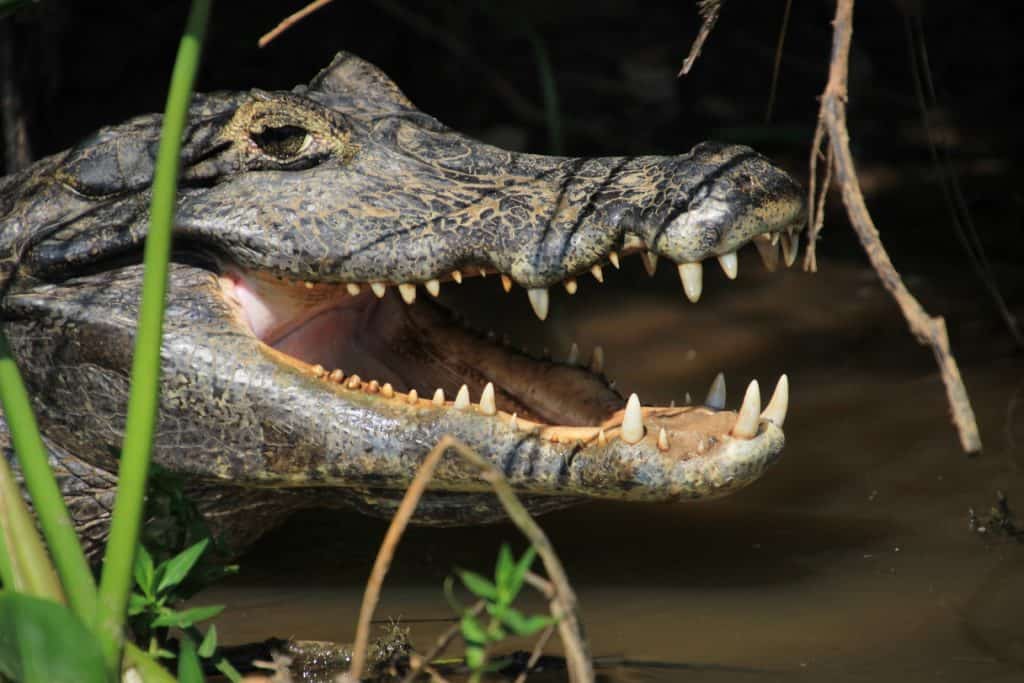
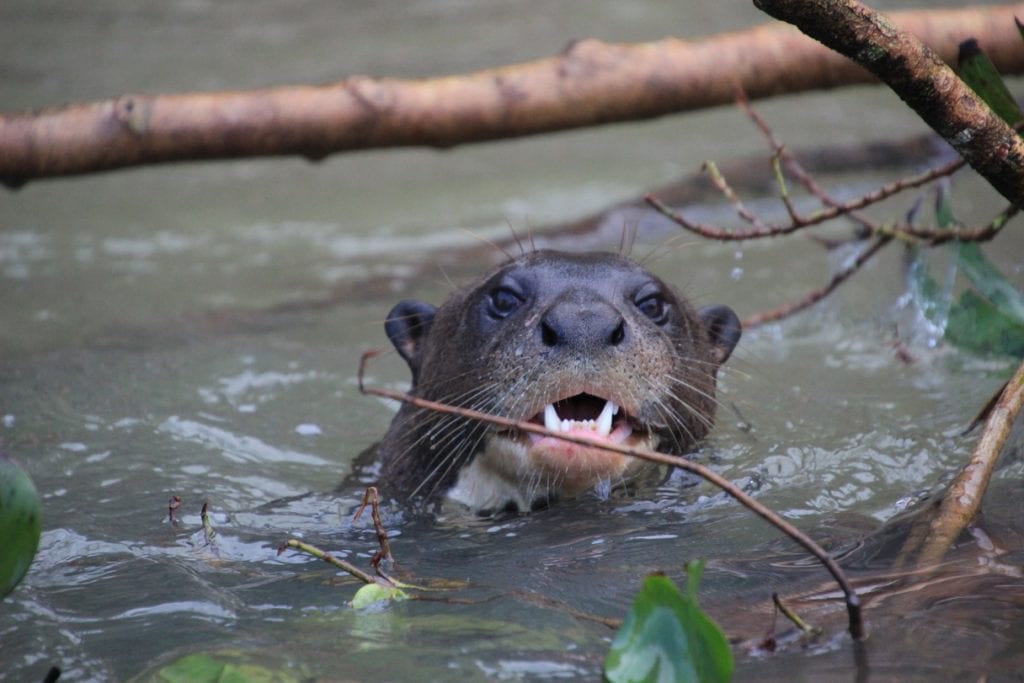
We stayed four nights at the Southwild Jaguar Flotel in the North Pantanal and another four nights at Pousada Refugio da Ilha in the South Pantanal. Each lodge provided an English-speaking naturalist guide who led us on personalized wildlife tours. The lodges offered daily programs but respected our preferences regarding timing and activity adjustments.
Meals at the lodges were included in our stay, and any dining outside the lodges was at well-rated restaurants with clean facilities. We also had private transportation arranged from each airport to our lodges, and the roads (except part of the North Pantanal) were generally paved and well-maintained. The locals were friendly and hardworking, and we felt safe throughout our trip.
For additional insights on our time in the South and North Pantanal and tips for planning a trip to this part of Brazil, check out Jaguar Safaris In The North And South Pantanal: Which Is Better?
Information About Bonito
Bonito is Brazil’s top ecotourism destination, situated in the Bodoquena Mountain range adjacent to the southern Pantanal. The area has a small airport but is also accessible via larger airports, such as Campo Grande International Airport, which is 158 miles (255 km) away, approximately a four-hour drive.
Before arriving in Bonito, we traveled from the South Pantanal. Our journey from Pousada Refugio da Ilha to Pousada Boyra, our hotel in Bonito, took about 2.5 hours.
Bonito boasts a wide range of accommodations, from hotels to lodges, catering to various budgets. The town itself is charming, featuring an array of wonderful restaurants and bars. If you’re looking for a quaint small-town experience in Brazil while indulging in some souvenir shopping, Bonito is the perfect destination for you.
While it is a popular adventure spot domestically, Bonito has yet to attract a significant number of international tourists. This has its perks, including a more authentic atmosphere. However, it also means that English may not be widely spoken among locals and guides.
We experienced this firsthand when we shared our English-speaking guide at a couple of attractions, despite having paid for private service. Our guide occasionally picked up other Portuguese and non-Portuguese tourists to join our tour, which was unexpected and somewhat confusing. While this practice may be common due to the shortage of multilingual guides in the area, it felt unfair since we were paying for exclusive guidance.
I recommend discussing these issues with your travel agent before booking to clarify what you can expect from your tour experience.
This situation did not arise at any other places we visited in Brazil or Argentina.
Pousada Boyra
We chose to stay at Pousada Boyra, a lovely resort located about 30 minutes from Bonito. This delightful hotel features spacious rooms in cozy cabins, a large outdoor pool with sun loungers, and picturesque views of rolling hills and the river below.
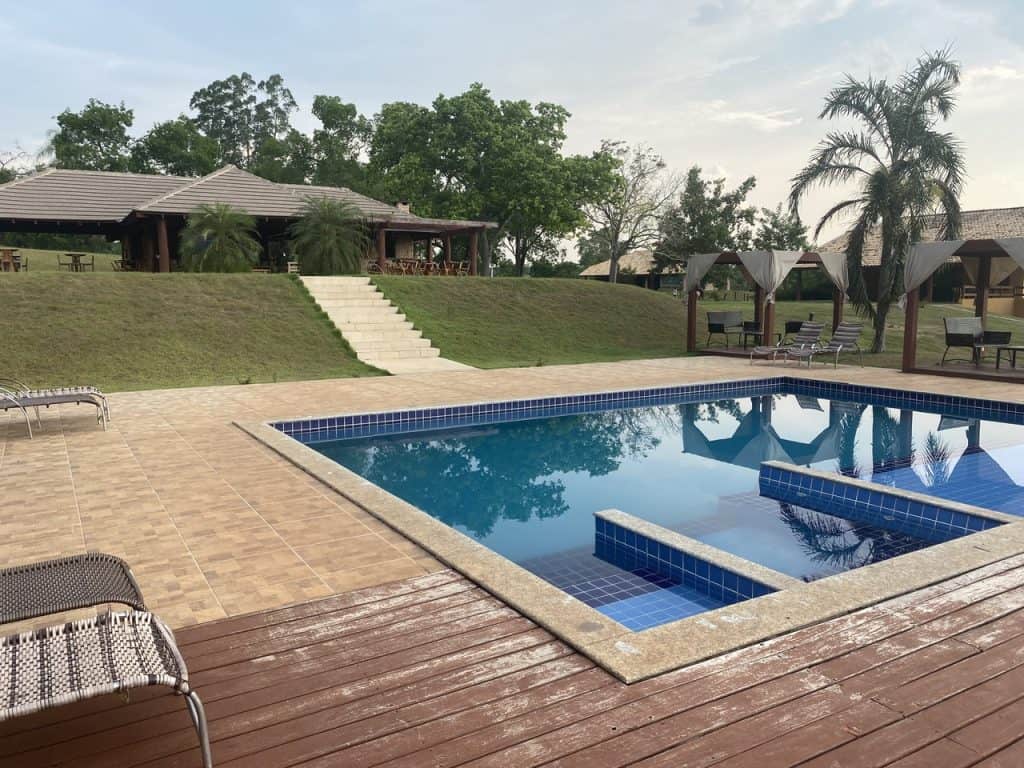
Adjacent to the pool, there is a games area and an outdoor lounge equipped with a TV and bar. Breakfast and dinner were served in a separate building with a stylish dining room and another bar.
We opted for half-board service, meaning our breakfast and dinner were included in the room rate. The food was excellent, with generous portions.
In addition to relaxing by the pool, guests can enjoy paddleboarding, kayaking, snorkeling, or swimming in the crystal-clear river. Scenic walking paths follow the river’s edge.
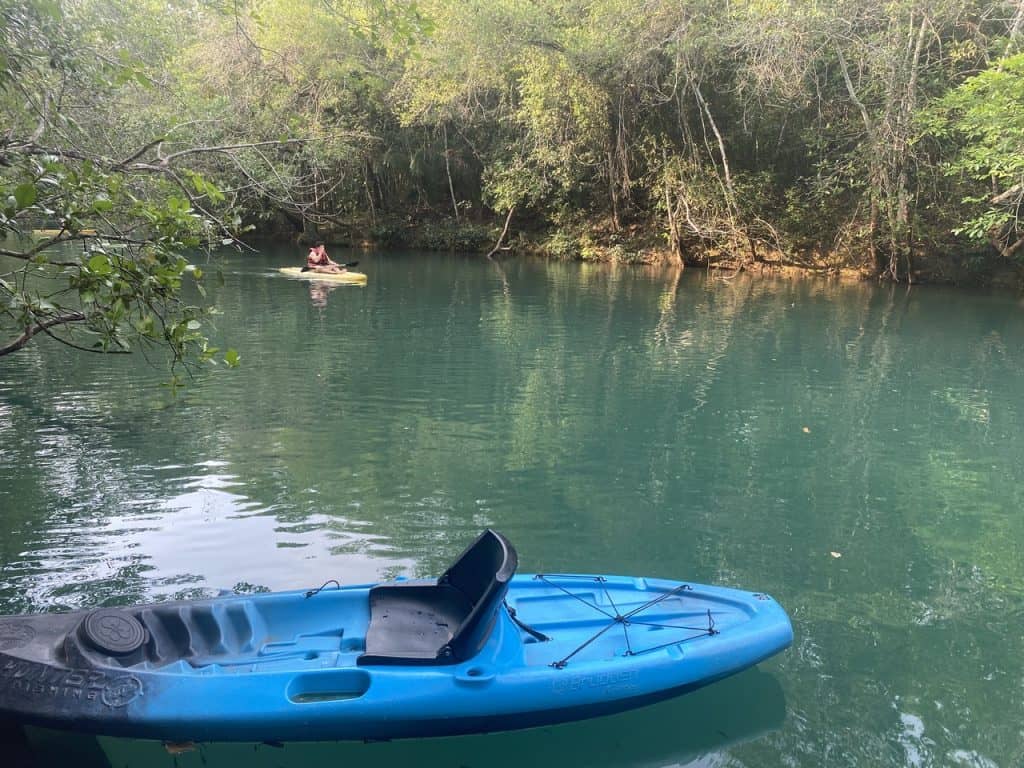
We thoroughly enjoyed our two-night stay, thanks to the remarkable staff who were friendly, attentive, and eager to ensure our experience was perfect.
Day One Of Our Bonito Holiday
Following breakfast at our lodge in the South Pantanal, we stopped for lunch in Bonito and arrived at Pousada Boyra in the early afternoon. We dedicated the remainder of the day to lounging by the pool, swimming in the river, and simply unwinding. After a busy ten days of travel and exploration, it was refreshing to have a half day with minimal plans.
Day Two of Bonito Vacation
Our second day in Bonito was filled with incredible sights and experiences. We visited the following:
- Gruta Do Lago Azul Natural Monument (Blue Lake Grotto);
- Buraco Das Araras (Sinkhole of the Macaws); and
- Rio Da Prata.
Blue Lake Grotto
We set off early in the morning, accompanied by our guide in a private vehicle, to visit Gruta Do Lago Azul Natural Monument (Blue Lake Grotto), which was about an hour’s drive away.
On our way to the Grotto, we spotted many Giant Anteaters in the open fields along the route! Although we had seen one in the South Pantanal, seeing several in Bonito was a delightful surprise.
These creatures are both striking and peculiar, having a small body with tiny legs and an enormous tail that seems amusingly disproportionate.
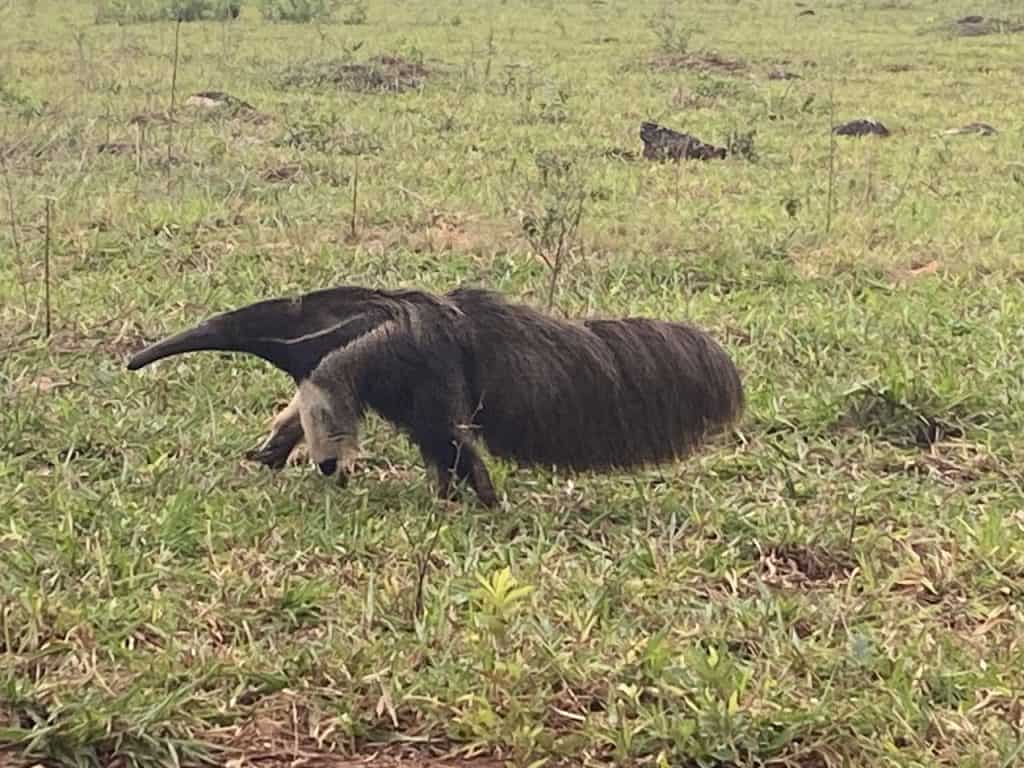
The Blue Lake Grotto is known for being one of the largest flooded caves globally, containing a wealth of prehistoric animal bones, including saber-toothed tigers and giant sloths. The expansive cave is filled with stunningly clear blue water, believed to reach depths of over 200 feet. Sunlight filtering through a fissure in the ceiling creates mesmerizing blue hues in the water, which is thought to be fed by an undiscovered underground river.
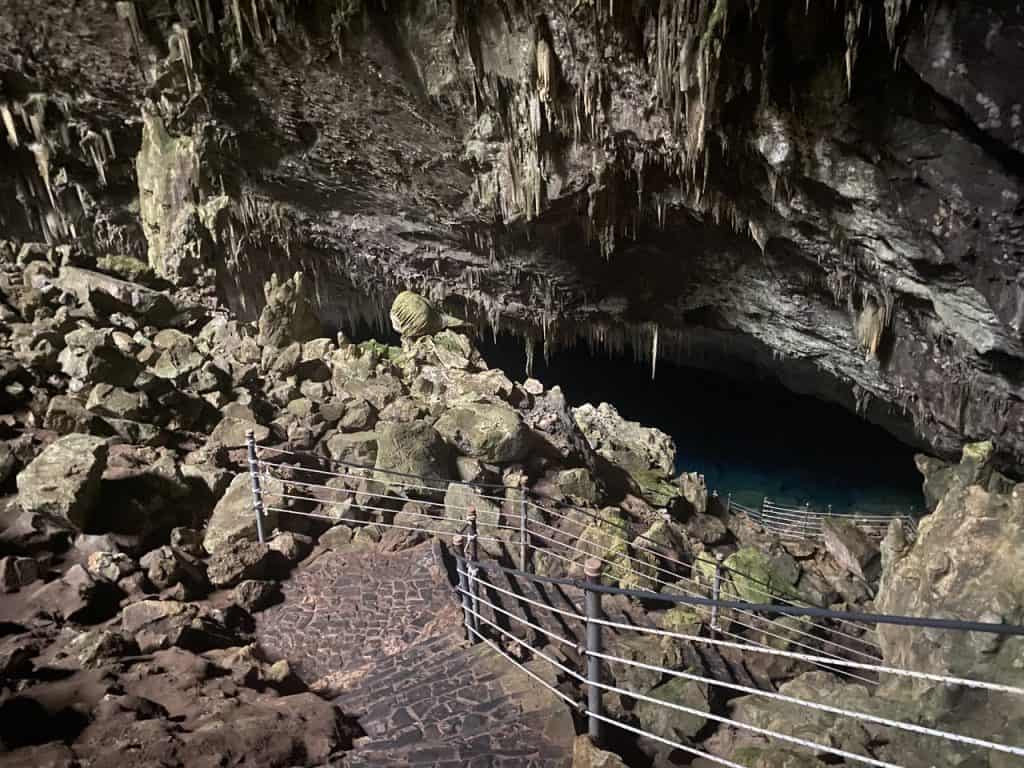
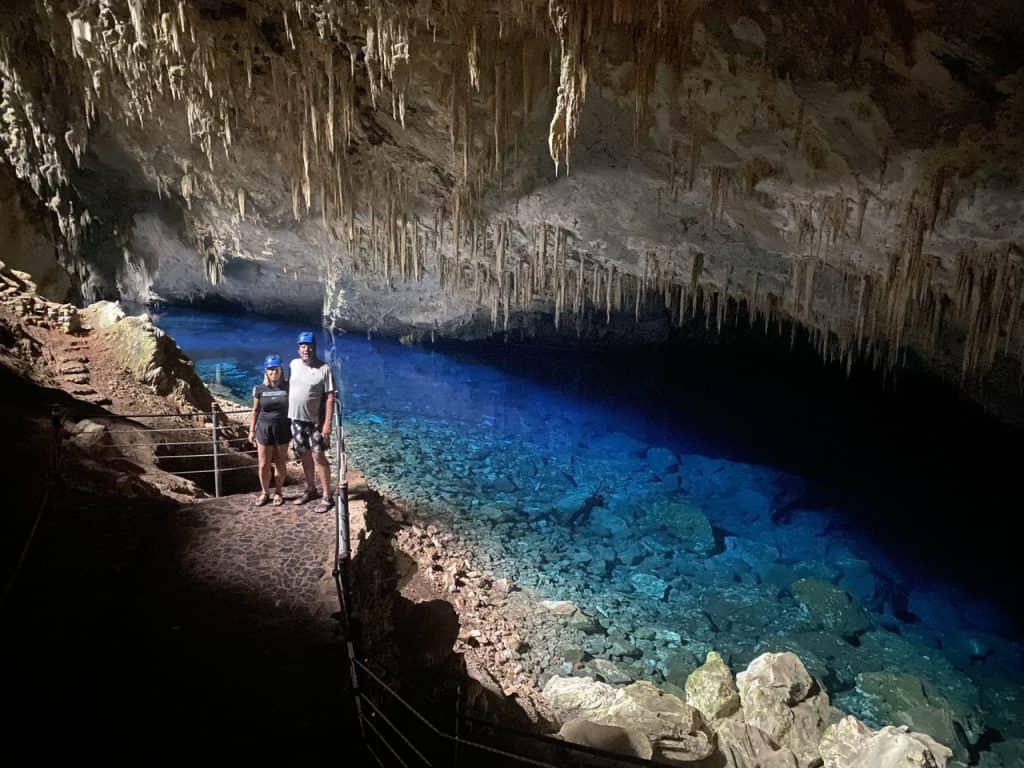
With our guide, we walked about 15 minutes through the jungle from the entrance along a pathway until we reached the access point for the Grotto. At our scheduled time, we descended approximately 300 rocky steps to a viewing area adjacent to the water. While the cave’s beauty is captivating, the water’s clarity is truly spectacular.
Please note that the Grotto is not wheelchair or stroller accessible; the stairs can be steep and slippery, so it’s advisable to wear sturdy shoes with secure straps (avoid flip-flops). Visitors are provided with a helmet that must be worn at all times.
Due to visitor safety regulations, only a limited number of tickets are available for purchase each day. Be sure to buy your tickets in advance, especially on weekends and during holidays.
Other Resources
We have enjoyed many thrilling adventures in South America. For more information on various destinations and our experiences, please see:
Buraco Das Araras
Our next stop was Buraco Das Araras (Sinkhole of the Macaws), the largest sinkhole in South America, measuring about 1,600 feet (500 meters) in diameter and 330 feet (100 meters) deep, home to hundreds of macaws.
We followed a smooth path through the jungle surrounding the sinkhole. Our guide pointed out numerous intriguing trees and plants, many of which are used for medicinal purposes.
On either side of the sinkhole, we encountered two two-story viewing platforms, offering exceptional perspectives for photographs of the sinkhole and its macaw inhabitants.
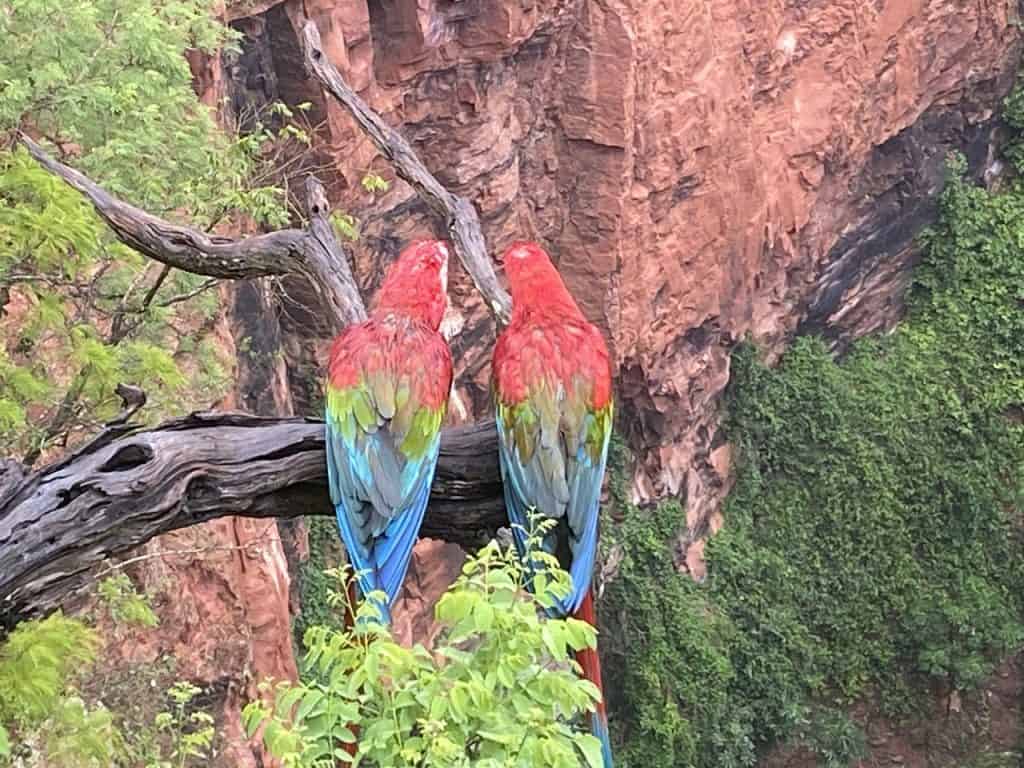
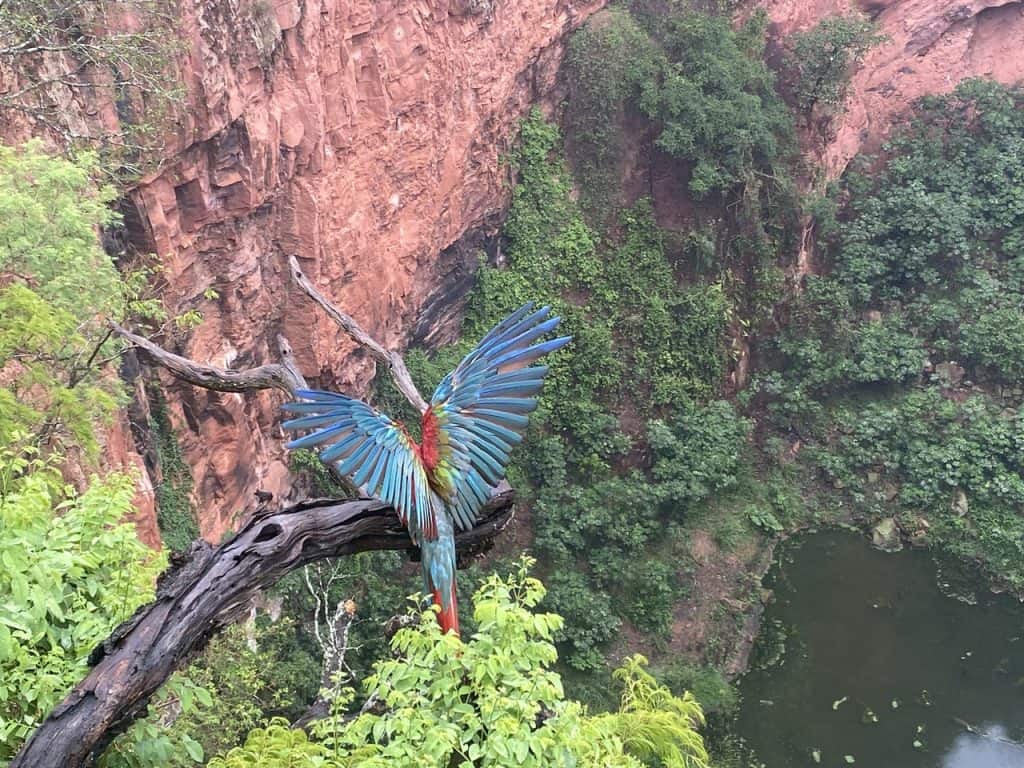
Typically, you can find 30-40 macaws in the area at any given time, but it’s not uncommon to see many more or fewer if it happens to be raining.
While the red-and-green macaws steal the show, there are plenty of other birds to admire and capture on camera, such as toco toucans, blue-crowned motmots, and blue-headed trogons.
For optimal lighting and photo opportunities, morning and late afternoon visits are recommended. As with the Grotto, it’s advisable to book your tickets in advance to ensure entry.
Rio Da Prata
From the Sinkhole of the Macaws, we drove 23 minutes to Rio Da Prata (Silver River).
Rio da Prata ranks as the third clearest river in the world and is part of a private nature reserve dedicated to sustainable tourism and conservation. The river captivates visitors with its astonishing visibility, allowing you to observe every detail beneath the surface, including fish, springs, and surrounding flora.
We were outfitted with wetsuits and snorkeling gear before boarding a bus for a short 10-minute ride. Once we entered the water, we quickly appreciated the benefits of the wetsuits; while the water is not cold, it is cool. Since you’re floating down the current rather than actively swimming (often just inches above rocks and the riverbed), your body temperature can drop fairly quickly.
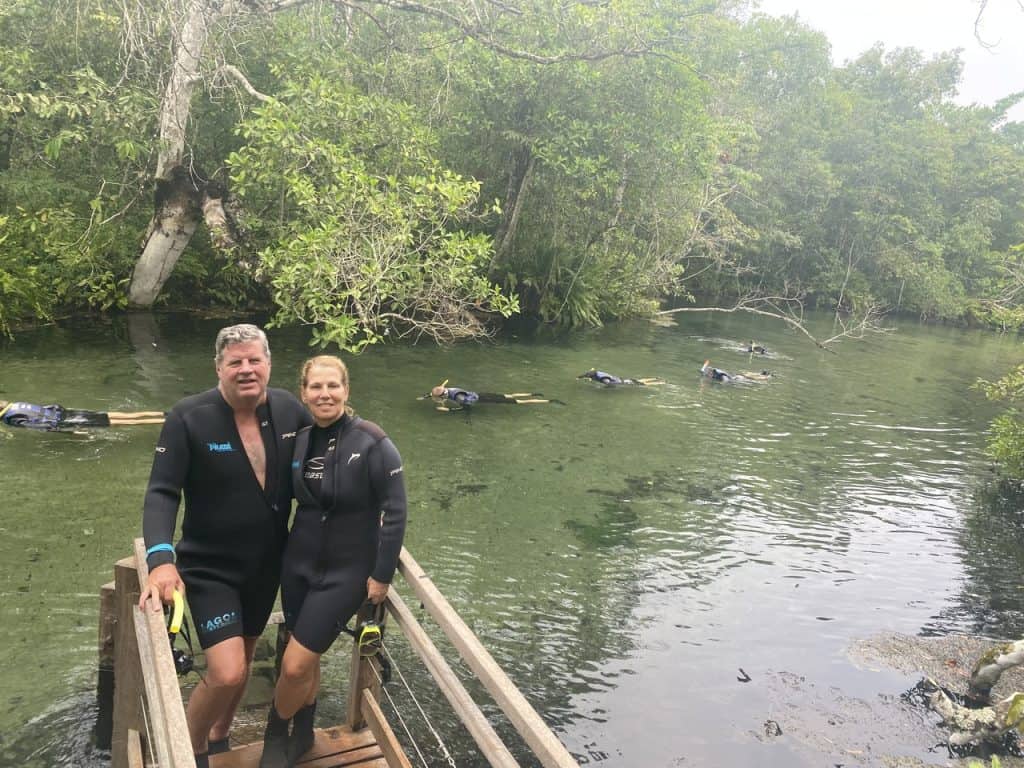
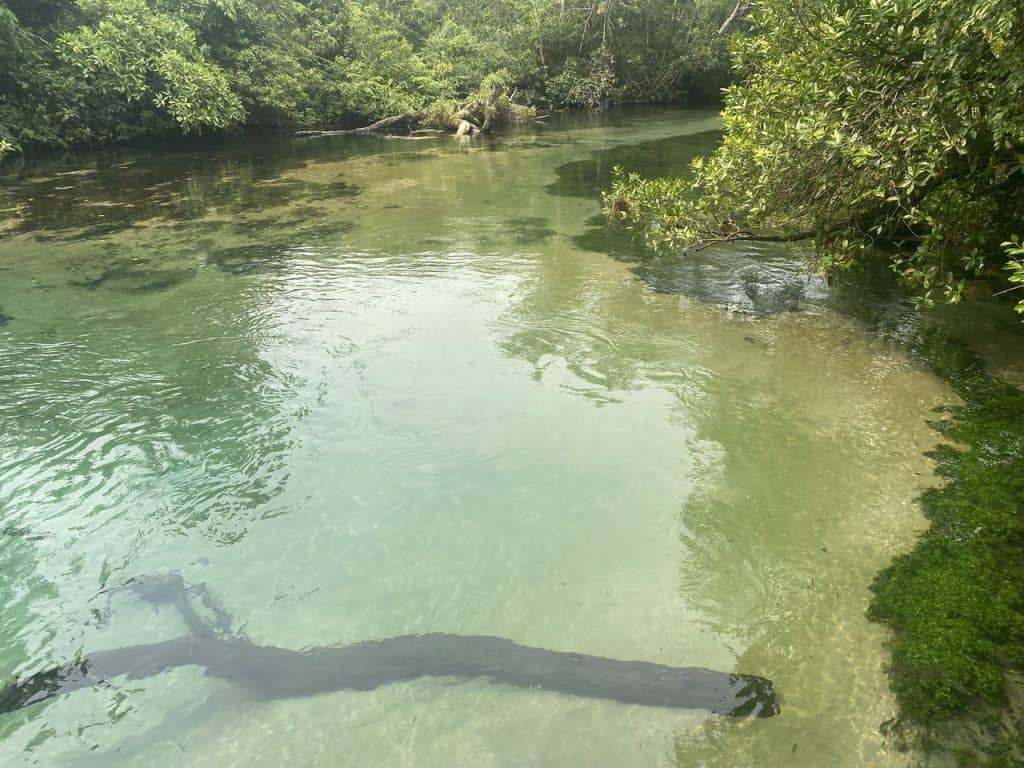
After a brief walk through lush rainforest, we snorkeled 1.9 miles (3 km) downstream along Rio Olha d’Agua and Rio da Prata, encountering various fish species, including the yellow-finned Piraputanga, the iconic dorado, and the small, vibrant red Mato Grosso fish.
Upon reaching a larger, murky river, we had the choice to climb onto a waiting boat or swim the final 55 yards (50 meters) to the dock. Despite the murkiness of the water, fish and vegetation remained visible beneath the surface, albeit in close proximity.
We opted to swim and snorkel for the remainder of the distance. As we neared the dock, an employee in the water gestured for us to move closer to the riverbank, pointing out a 7-foot anaconda resting just below the surface. While the sight was thrilling, I experienced a moment of panic as I struggled against the current pulling me toward the snake.
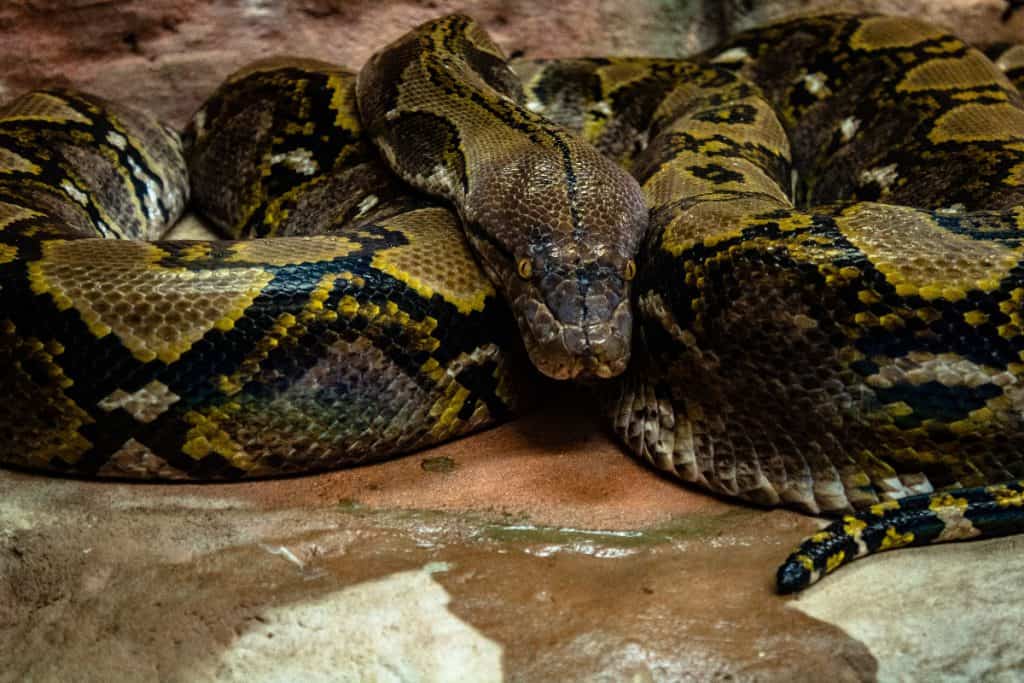
Thankfully, I managed to stop and backtrack. After a few minutes, we observed the anaconda closely before quickly exiting the water, not wanting to discover what other creatures might be lurking beneath the surface.
Once we returned to the entrance, we changed and enjoyed a delicious meal at the on-site restaurant before driving 40 minutes back to our hotel.
This experience was truly enjoyable and stood out as one of the most unique experiences we had in Brazil. The visibility of the underwater life was captivating.
As with the other attractions in Bonito, there are limited tickets available each day; be sure to book your tickets in advance to secure your spot.
Day 3 Of Our Bonito Getaway
We woke up early to embark on a four-hour drive to Campo Grande Airport for our flight to Iguazu Falls.
Last Word
Bonito is a remarkable destination located in the South Pantanal of Brazil. With beautiful lodges, hotels, and incredible natural wonders along with diverse wildlife, it is a highly recommended addition to any travel itinerary in the Pantanal or Brazil.



